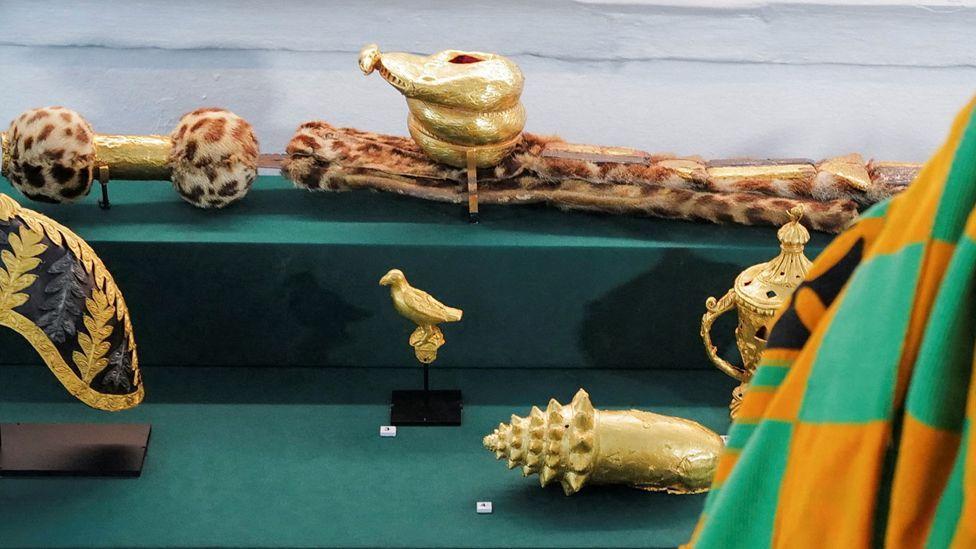Returned Artifacts from Colonial Era: Contrasting Approaches in Ghana and Nigeria
As Ghana proudly displays artifacts looted by the British during the colonial era, Nigeria’s delay in exhibiting its returned treasures raises questions. Recently, a convoy raced from Accra to Kumasi, carrying a precious cargo: 32 pieces of gold and silver, including ornate necklaces, a ceremonial sword, and a peace pipe. These items, seized by British soldiers during invasions of Asante land in the late 19th century, had been held in the UK since then.
Arriving at Manhyia Palace, Otumfuo Osei Tutu II, the current Asantehene, unveiled the treasures amidst poignant scenes. The return of these artifacts has been a longstanding demand of the Asante people. Osei Tutu II expressed both triumph and reflection, noting that while not all stolen items have been recovered, those present encapsulate the essence of Asante culture.
Ivor Agyeman-Duah, director of the Manhyia Palace Museum and a pivotal figure in the negotiations, ensured the safe transportation of the artifacts. Negotiations for their return were intricate due to British legal constraints, which permit only long-term loans rather than permanent repatriation.
While Ghana celebrates the return of its cultural heritage, Nigeria’s delay in exhibiting its recovered artifacts underscores ongoing challenges and complexities in repatriation efforts.

